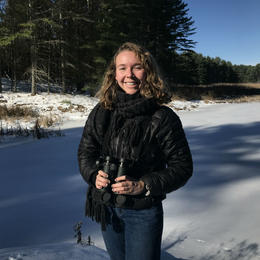The color pallete of Vermont winters consists of gray, brown and white most days - that's why birding for colorful birds may be a great way to invite some color into your life! Plus, these birds never look so bright as they do against the drab of winter without any flowers to compete with.
This is an introduction to several colorful birds that stay or migrate to Vermont for wintertime. We'll learn basic ID and how to attract them to your feeders.
Why are some birds so bright? There are a few different reasons. To start, many male birds have bright, flashy plumage in order to attract a mate. According to the Birds of North America Online, brighter males have higher reproductive success, hold better territories, and offer more parental care. The degree of brightness depends on the bird's diet. For example, the male Northern Cardinal's color depends on the carotenoids (plant pigment that makes red, organge, and yellow) present in their diet of native fruits.
Northern Cardinal
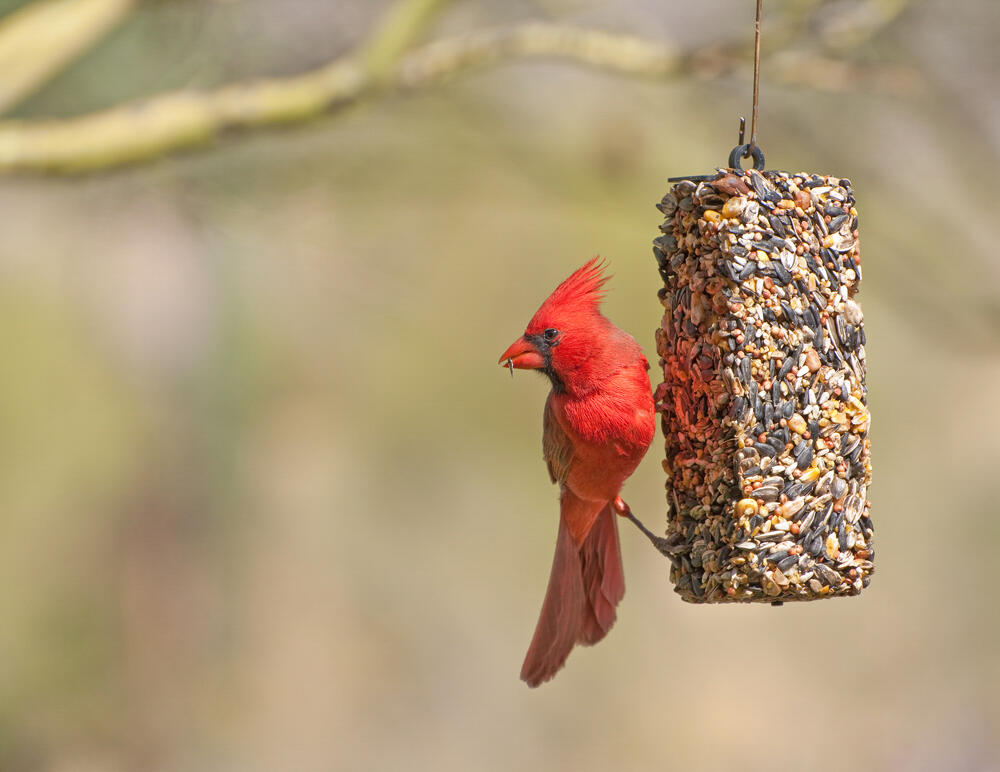
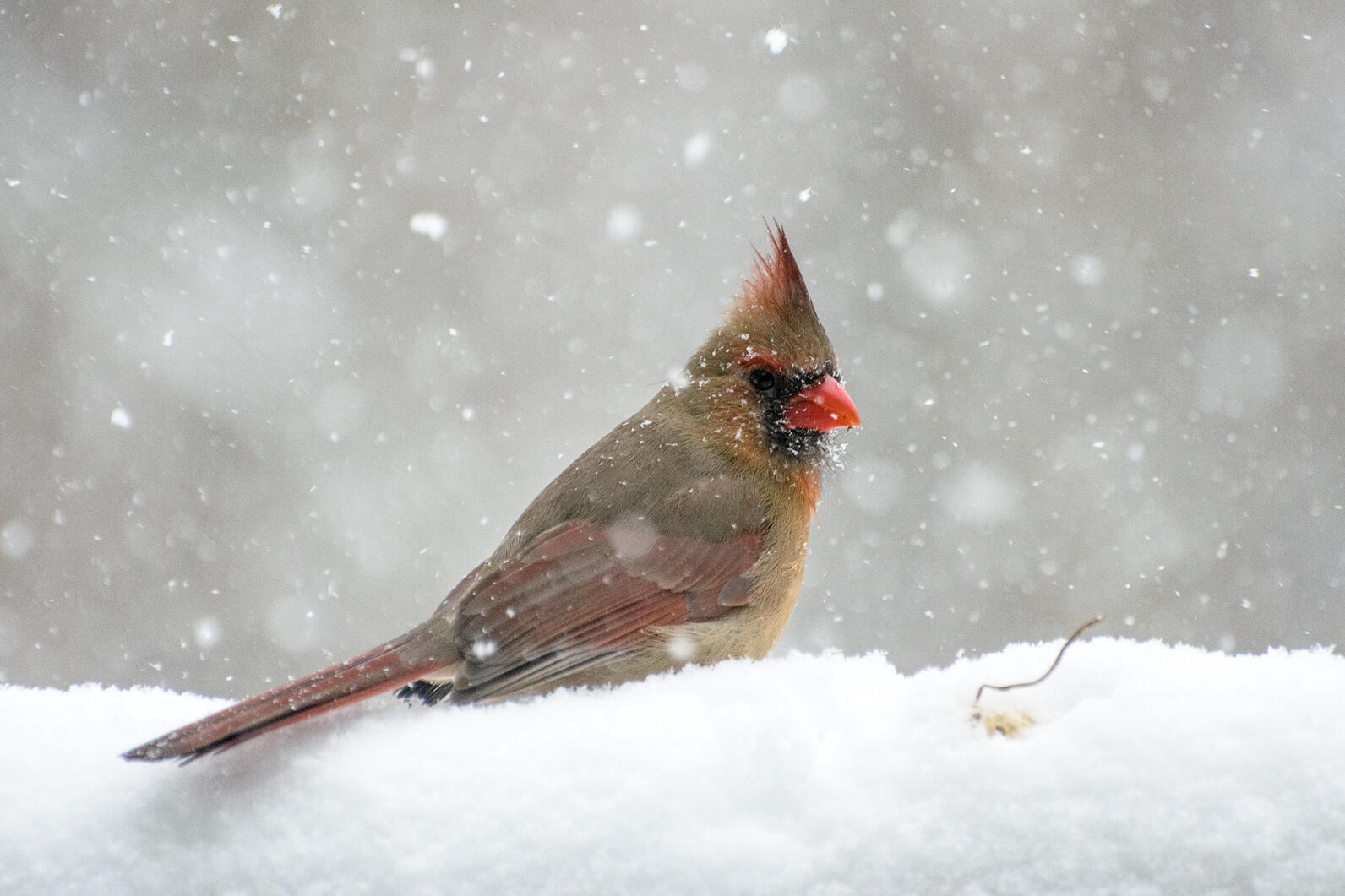
ID info: Large, plump songbird with a long tail, stout conical bill, and prominent creat. Males are a crimson red with a black mask and neck. Females are pale brown with reddish details on the wings, tail feathers and crest. Perch with tail down, giving them a hunched posture.
Winter diet: Fruit and seeds such as wild grapes, blackberry, sumac, corn, grasses, etc.
Habitat: Woodland edges, thickets, suburban neigborhoods, city parks, etc. Prefer brushy, open areas
Calls/songs: Sounds like a laser
How to attract to your yard/feeder: A feeder big enough for them to perch comfortably. They seem to prefer black oil sunflower seeds.
Blue Jay
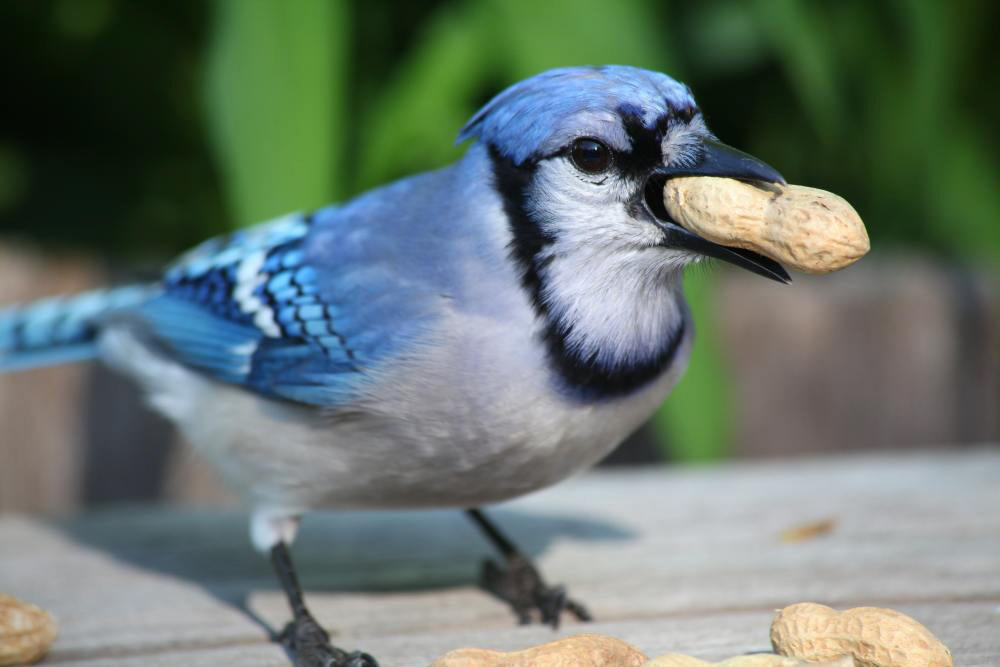
ID info: Large songbirdwith blue, white and black plumage. Big white chest, prominent blue crest and a black 'necklace.' White wingbar.
Winter diet: Mostly nuts, fruit and seeds. They also eat grains and dead/injurged vertebrates.
Habitat: Found practically everywhere. Rural and suburban regular. Prefer oak trees because they love acorns.
Call: Noisy call that sounds like they are calling "Jay!"
How to attract to your yard/feeder: Nothing special. Just having a feeder large enough for them to perch should do the trick. They can be a feeder bully.
American Goldfinch
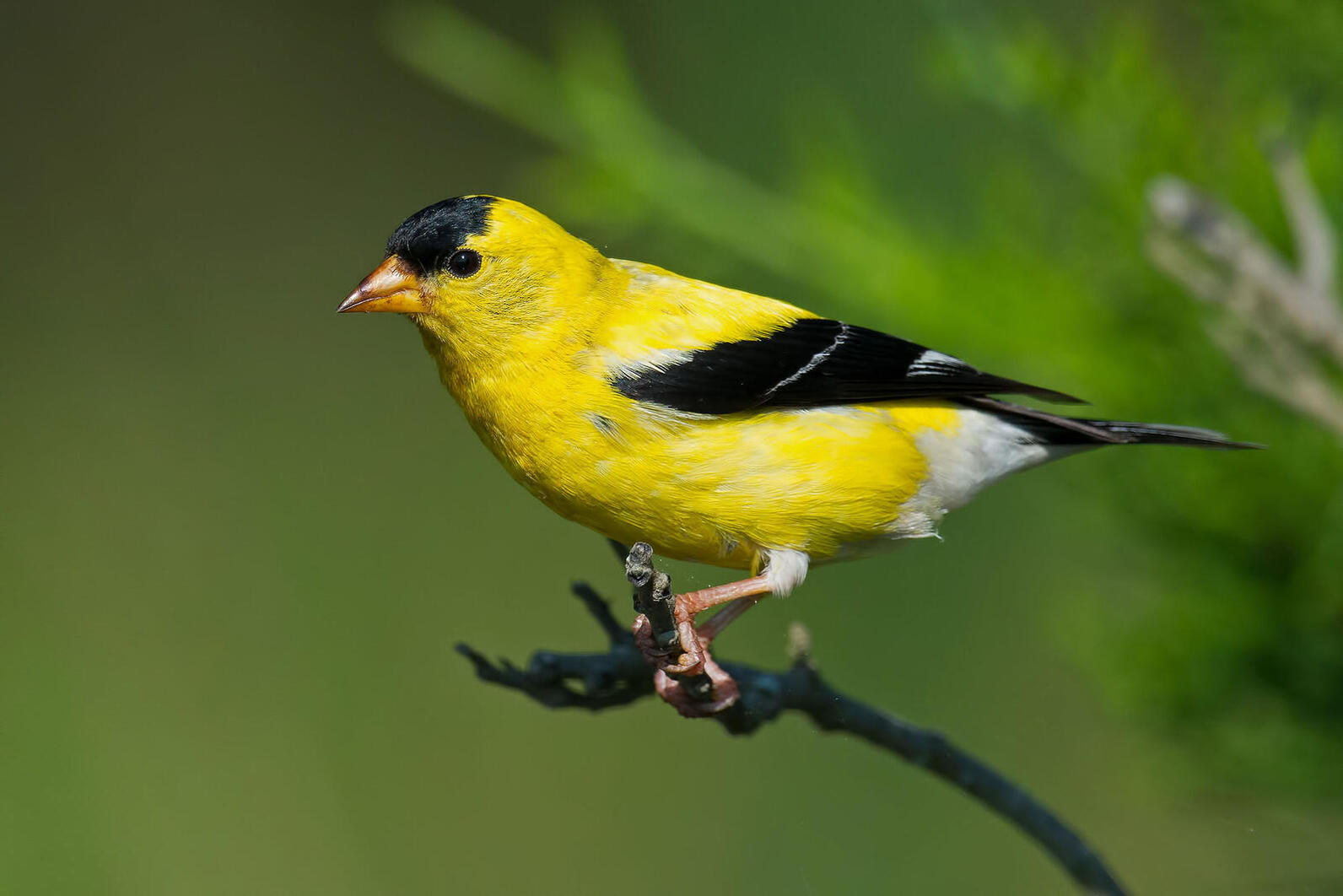
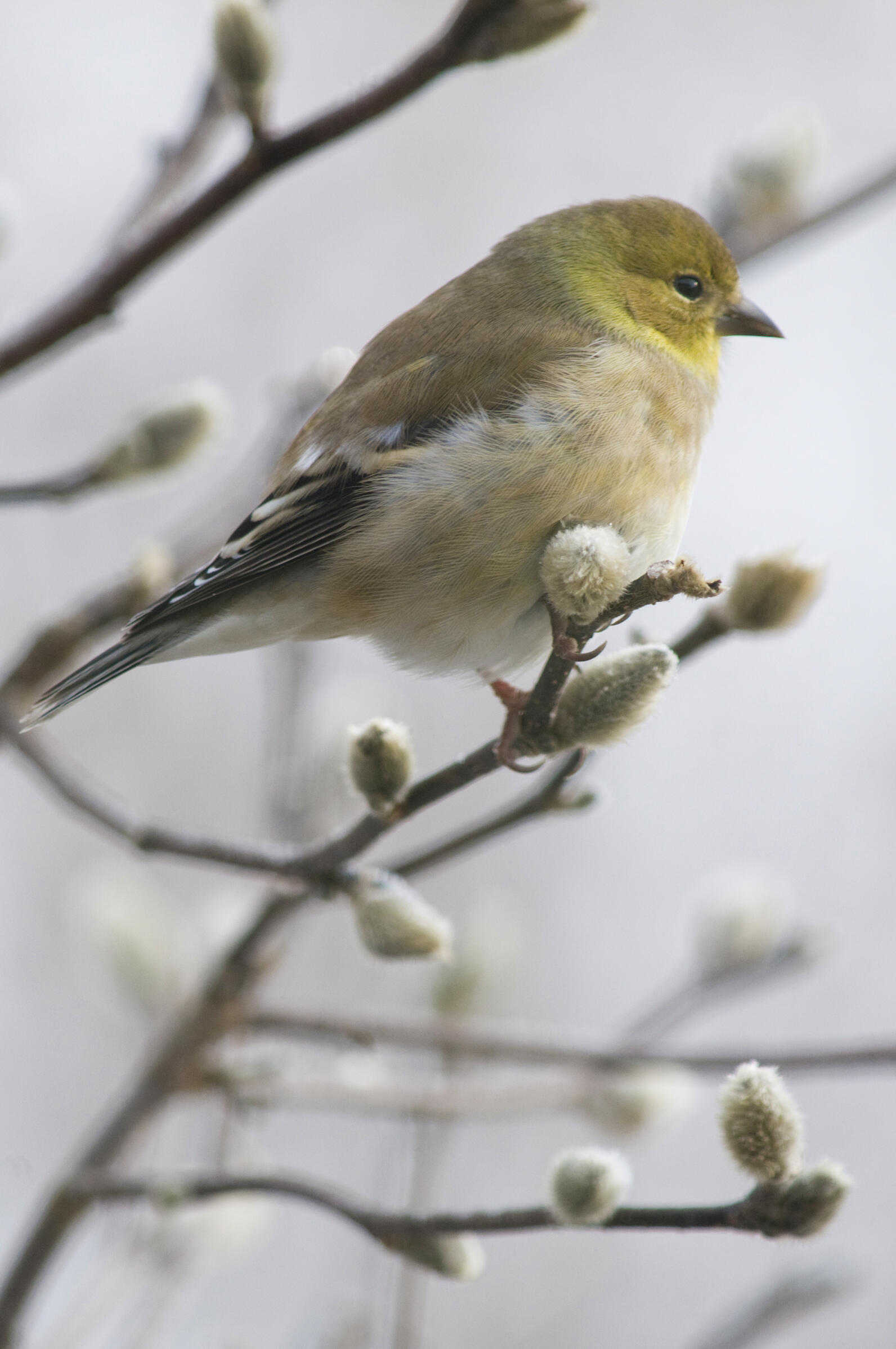
ID info: Small finch with a stout, conical bill. Known for their bright yellow plumage, but during the winter they molt and become a pale yellow (Picture 2). Males have a black forehead and black wings with white markings.
Winter diet: Seeds.
Habitat: Weedy fields/meadows, open floodplains, areas with shrubs and trees for nesting. Common feeder, backyard and park visitor.
How to attract to your yard/feeder: Not picky about the kind of feeder you have. Prefers feeders with sunflower or nyjer.
Eastern Bluebird
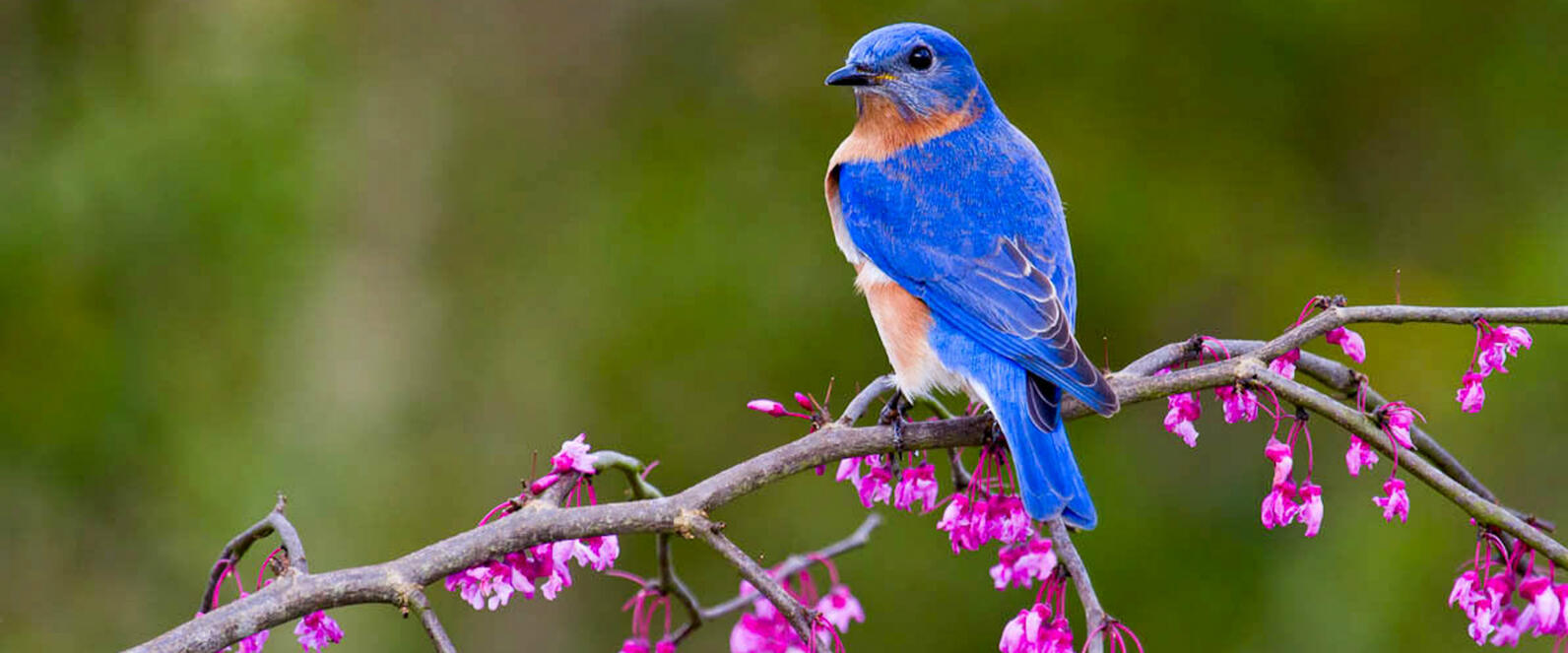
ID info: Small thrush with a big head and plump body. Blue back and rusty-cinnamon colored throat and chest.
Winter diet: Fruit
Habitat: Open fields with trees nearby. Mostly found near agricultural fields, pasture and backyards. Common nest box user. More likely to see a Bluebird in Winter in Southern Vermont until March or so.
How to attract to your yard/feeder: Doesn't usually visit feeders, but may if you put mealworms out.
Irruptive Migrants
Irruptive migrants are species of birds, usually from the far North, that migrate to our region during certain winters and leave in the spring. Irruptive migration is not easily predicted because these species rarely return to the same sites year after year. In other words, irrputive species are nomads of the bird world. Often, irruptive migration is a result of a lack of food or other resources for survival because the availability of food is not tied to the season. Some species Noteable irruptive species include: Snowy Owl, Pine Grosbeak, Pine Siskin, Northern Finches (Repolls and Crossbills) and waxwings.
Pine Grosbeak
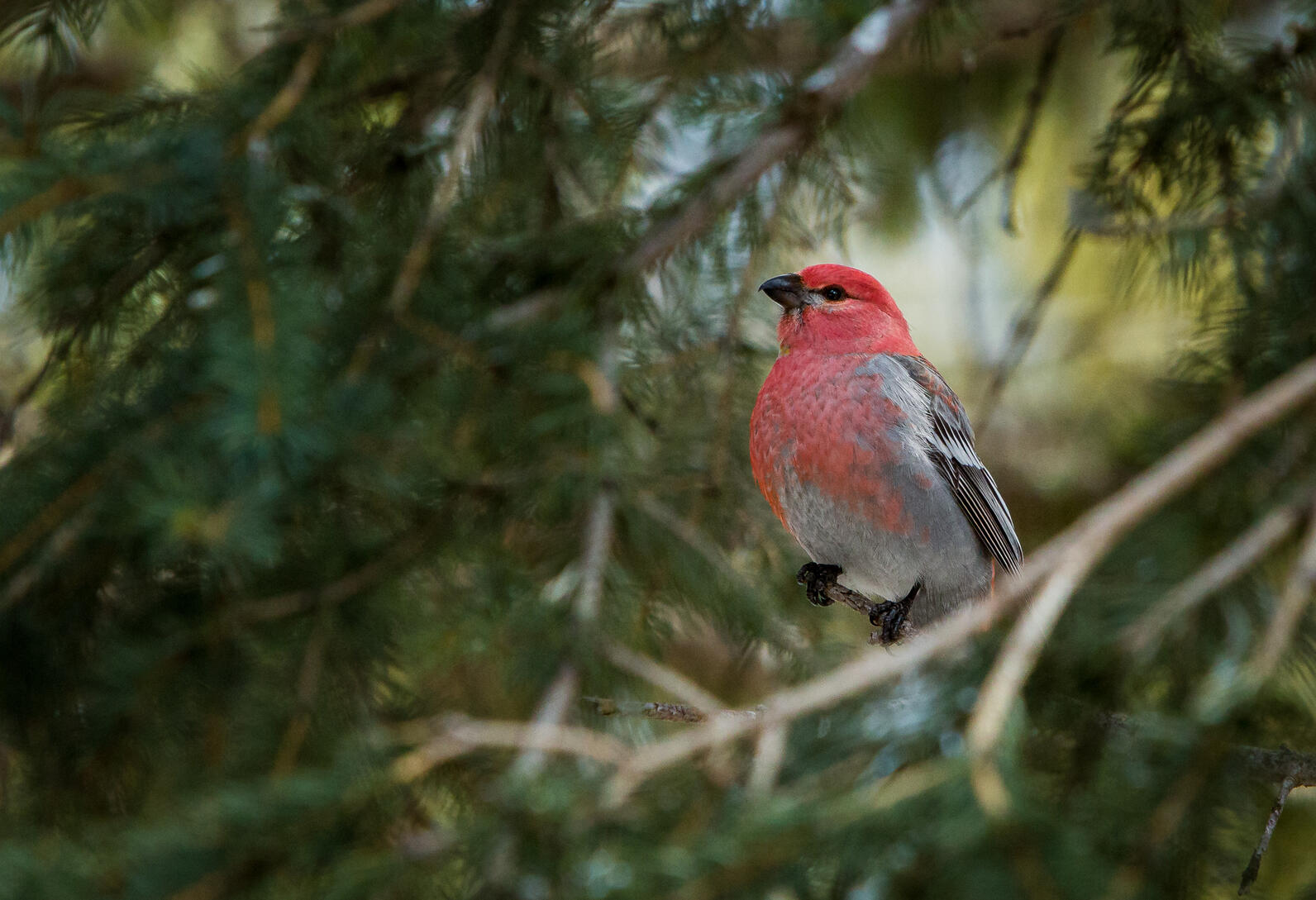
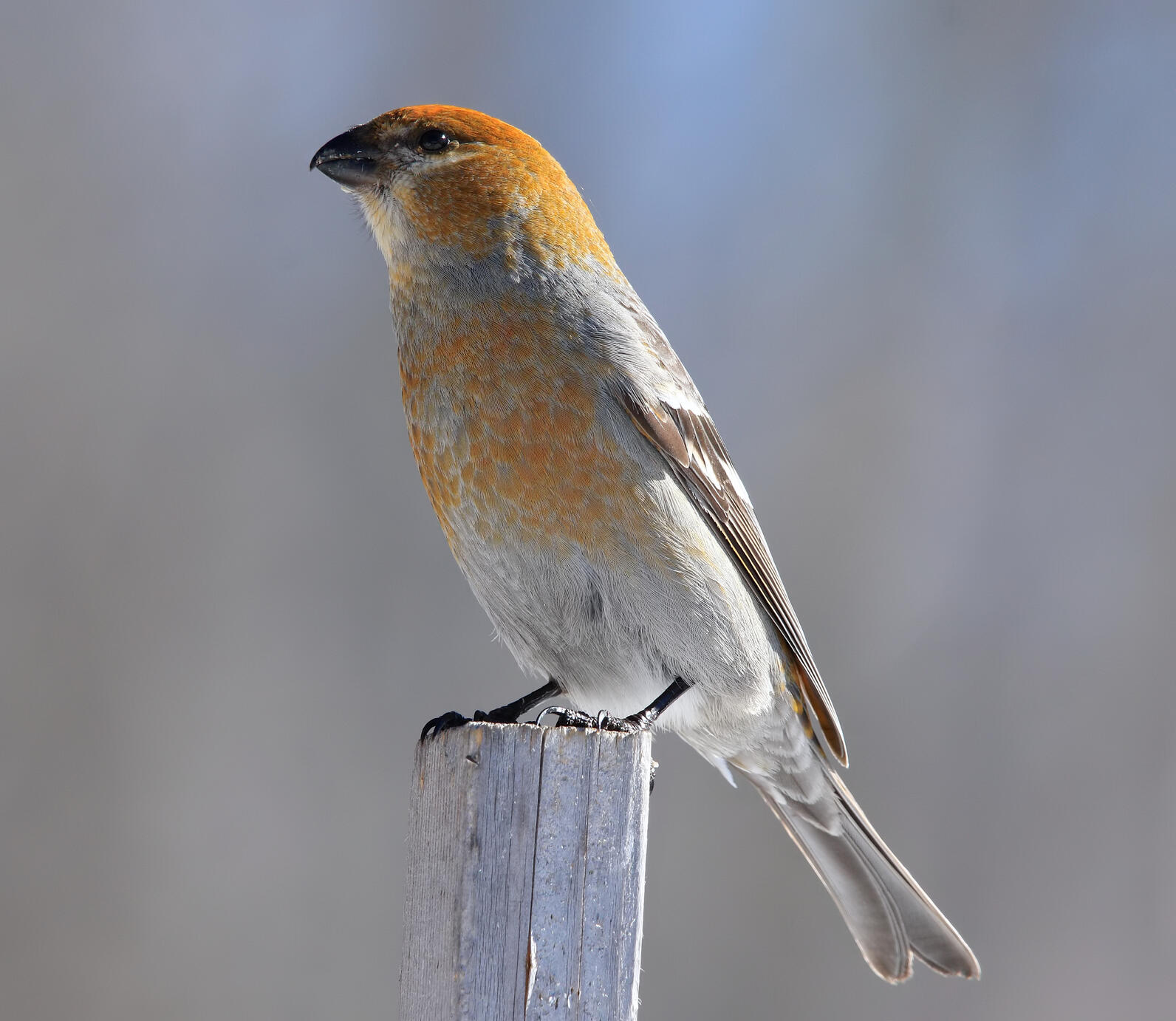
ID info: Large, plump finch with a round head and a stubby conical beak. Male plumage is reddish-pink and gray. Female plumage is yellow and gray.
Winter diet: Buds, seeds, and fruits from spruce, pine, juniper, birch, maple, burdock etc.
Habitat: Open evergreen (coniferous) forests with spruce, pine or fir trees.
How to attract: According to Cornell's Project Feederwatch Program, due to their size a large tube feeder, platform feeder, or large hopper is best. Fill one of these feeders with black oil sunflower seeds or hulled sunflower seeds.
Evening Grosbeak
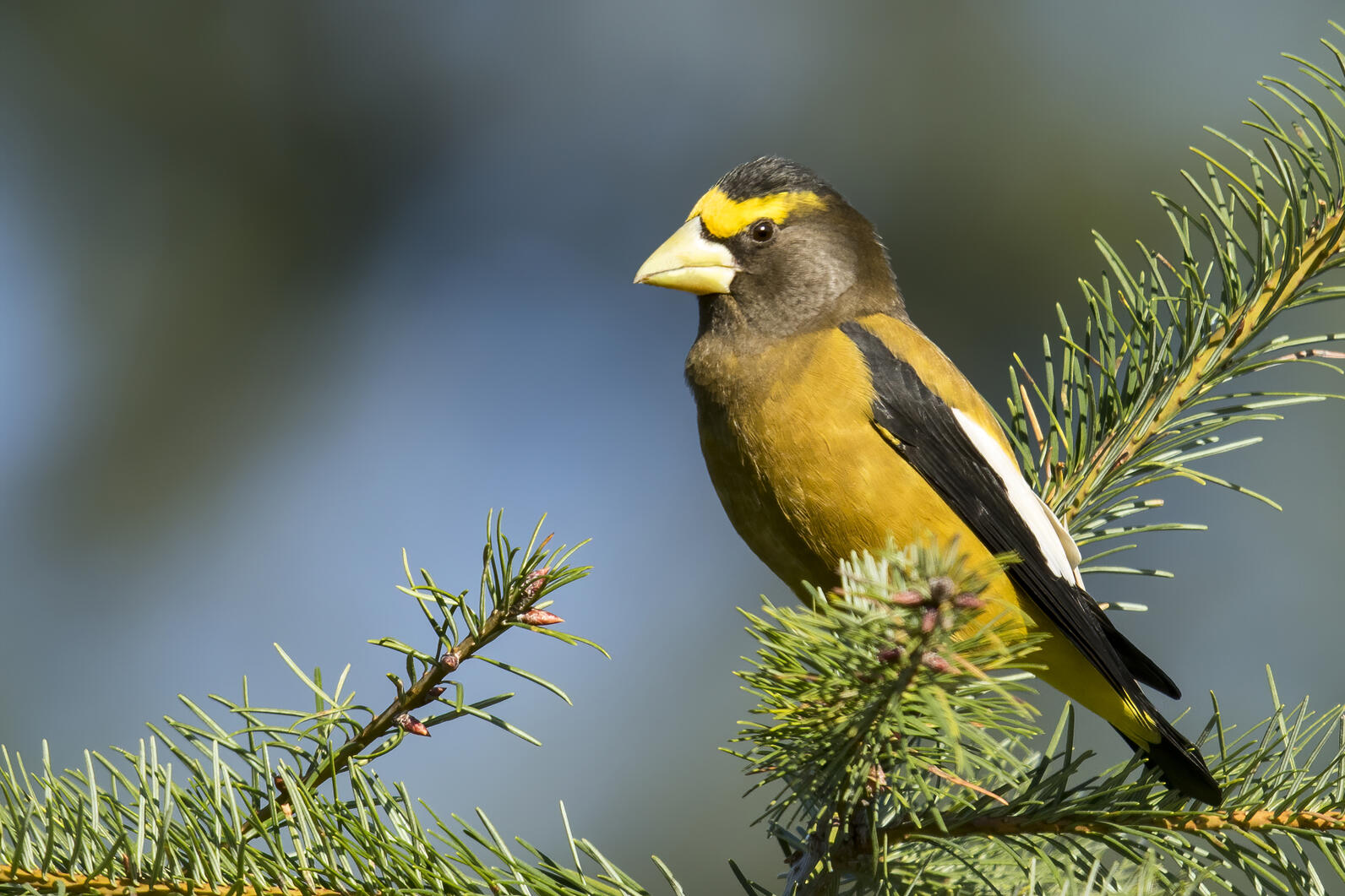
ID info: Large finch with thick bill. Males have bright yellow and black plumage with a white patch on the wings and yellow stripe above the eyes.
Winter diet: Typically feed at the tops of bushes and trees. Winter diet consists mostly of seeds, buds and fruits.
Habitat: In winter Evening Grosbeaks live in coniferous forest and deciduous forest as well as in urban and suburban areas. When wintering in urban environments they are most abundant in small woodlots near bird feeders (All About Birds, Cornell).
How to attract to your yard: Shows up irregularly at feeder looking for seeds. Platform feeders are best due to their size.

